► BYD Seal driven in the UK in both guises
► Up to 354 claimed miles of range
► LFP Blade battery pack maximises interior space
Pity any new car maker that wants to pitch up and place its tanks on the lawns of the European and US blue bloods. Making waves is tough for a newcomer, but as BYD has proved with the Seal, it is possible to tilt at the best cars out there. All it takes to break through is to offer something genuinely new, useful and desirable.
BYD is well on its way to ‘doing a Tesla’ is this toughest and most status-conscious market. Well-established in China and selling in huge numbers globally, its high-tech, innovative and good-value range of EVs is making real inroads into the UK market. The Seal remains BYD’s halo car, and is doing a great job of tempting buyers into its swish new showrooms, just as the Hyundai Ioniq 5 and Kia EV6 have done before.
Should you buy a BYD Seal? If you want sharp looks, serious tech and punchy performance for less than a Model 3, the answer’s yes.
Find out how we test cars to see why you can trust us.
At a glance
Pros: handsome styling, strong performance, high-tech interior
Cons: firm ride, fiddly regen controls, brand still has some obstacles to clear

What’s new?
Since going on sale in 2023, BYD’s done a good job of replicating Tesla’s playbook by launching a range of desirable, tech-laden EVs. The Seal joins a European product offensive that also includes the Sealion 7 SUV at one end of the range and the budget Dolphin Surf at the other – it’s already created an entire model range in little over a year. Impressive. With the Seal, it lands bang in the middle of a fiercely contested D-segment electric saloon market.
The Seal stands out by mixing Porsche Taycan-inspired styling with impressive battery tech and performance. Yet despite the promise of a radically new Chinese EV, the Seal’s silhouette feels halfway between the curves of a Tesla Model 3 and the swoop of a Hyundai Ioniq 6. But look past the styling cues and the Seal proves to be a genuinely fresh contender.

What are the specs?
BYD builds almost everything for the Seal in-house, from batteries to semiconductors, meaning it’s less susceptible to economic headwinds than some of its more mainstream rivals. The car sits on BYD’s scalable e-Platform 3.0, which also means impressive economies of scale.
In the Seal, you get the firm’s own 82kWh lithium-ion phosphate ‘Blade’ battery which also forms part of the body structure, giving the car exceptional torsional stiffness of 40,500Nm/deg. Compared to the industry average of around 25,000Nm/deg, that’s impressive, and it helps achieve a lower floor, better packaging and a more natural driving position.
This battery tech is known for being safer and less prone to charging quirks over time – music to insurers’ ears. There are two versions are on sale:
- Design RWD: 308bhp, single-motor, 0-62mph in 5.9sec, WLTP range 354 miles
- Excellence AWD: 523bhp, dual-motor, 0-62mph in 3.8sec, WLTP range 323 miles
That means the Seal is longer-legged and quicker than a base Tesla Model 3, though the Model 3 still edges it slightly in outright performance and range. Charging is decent, if not class-leading. The Seal maxes out at 150kW DC charging and 11kW AC – slower than some rivals like the Ioniq 6, but perfectly sufficient for the UK’s network.

How does it drive?
We’ve driven the Seal on road and track, and in both circumstances, the Seal impresses with plenty of punch, direct steering with a quick rack, and a general sense of agility. It’s not physics-busting in the way a BMW i4 is, but tidy handling, good response, and excellent body control in general. Brakes, too, are consistent and offer excellent stopping power, even if a couple of examples we tried had softer brake response than we would have expected.
Starting out in the more powerful 523bhp Excellence and regardless of drive mode, throttle response is almost aggressive. But it’s progressive enough for quick acclimatisation, and soon you’ll be delving into its performance without feeling the need to constantly exploit it. Take up is smooth and accompanied by a unobtrusive EV hum, and motorway cruising is hushed thanks to effective sealing and double glazing.
However, if standing starts are your thing, then the Excellence model delivers. That 3.8 second 0-62mph time can be repeated ad nauseum. Two demonstration Seals on the drag strip had already had repeated full-bore acceleration tests at least 20 times by the time we climbed in, yet performance was unchanged. Try that in a Tesla Model 3 – you’ll get a quicker launch, twice, and then it could overheat.
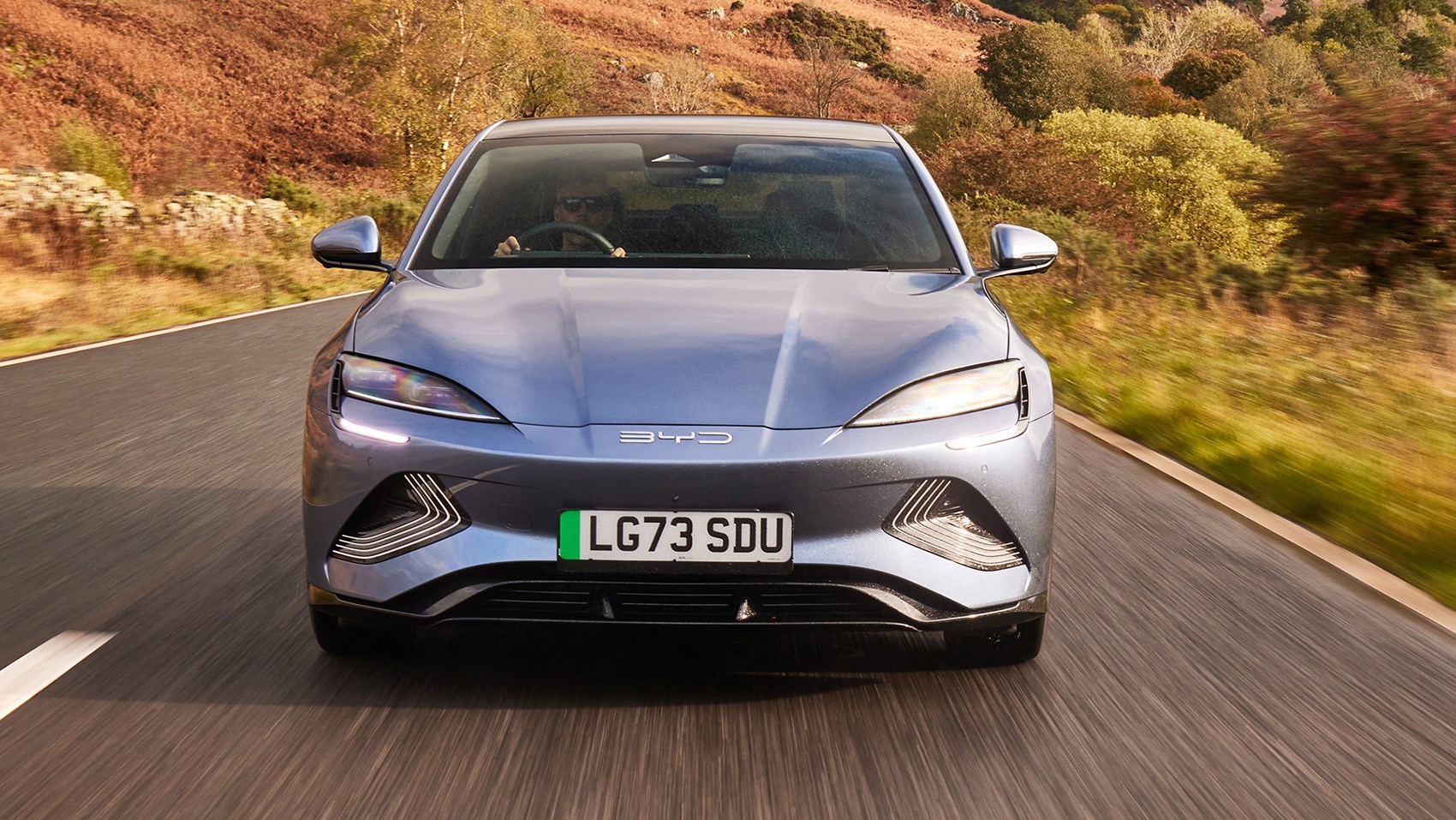
Get it away from the drag strip, and the Seal is even more impressive. Steering is quick and well-weighted, although in Sport mode, it’s probably a little too direct for most tastes. Dial it back to Normal mode and it’s still on the sharper side of normal with quite aggressive response around the straight ahead. Good thing, too, as in corners it feels neutral, turning-in responsively and with low levels of body roll to contend with
There are no steering wheel-mounted paddle controls, and any adjustments to regen are done within the settings menu – a shame because this can be a very useful feature. On a rain-affected test drive, it never felt anything other than confidence inspiring.
Ride quality, is on the sporting side of comfortable. It’s very compliant and seems suited to UK roads, even if those who like a softer experience might be disappointed by some patter on irregular road surfaces. However, we noticed than the ‘semi active’ system in the Excellence model suffered from a little too much of this, failing to settle down fully at certain speeds.
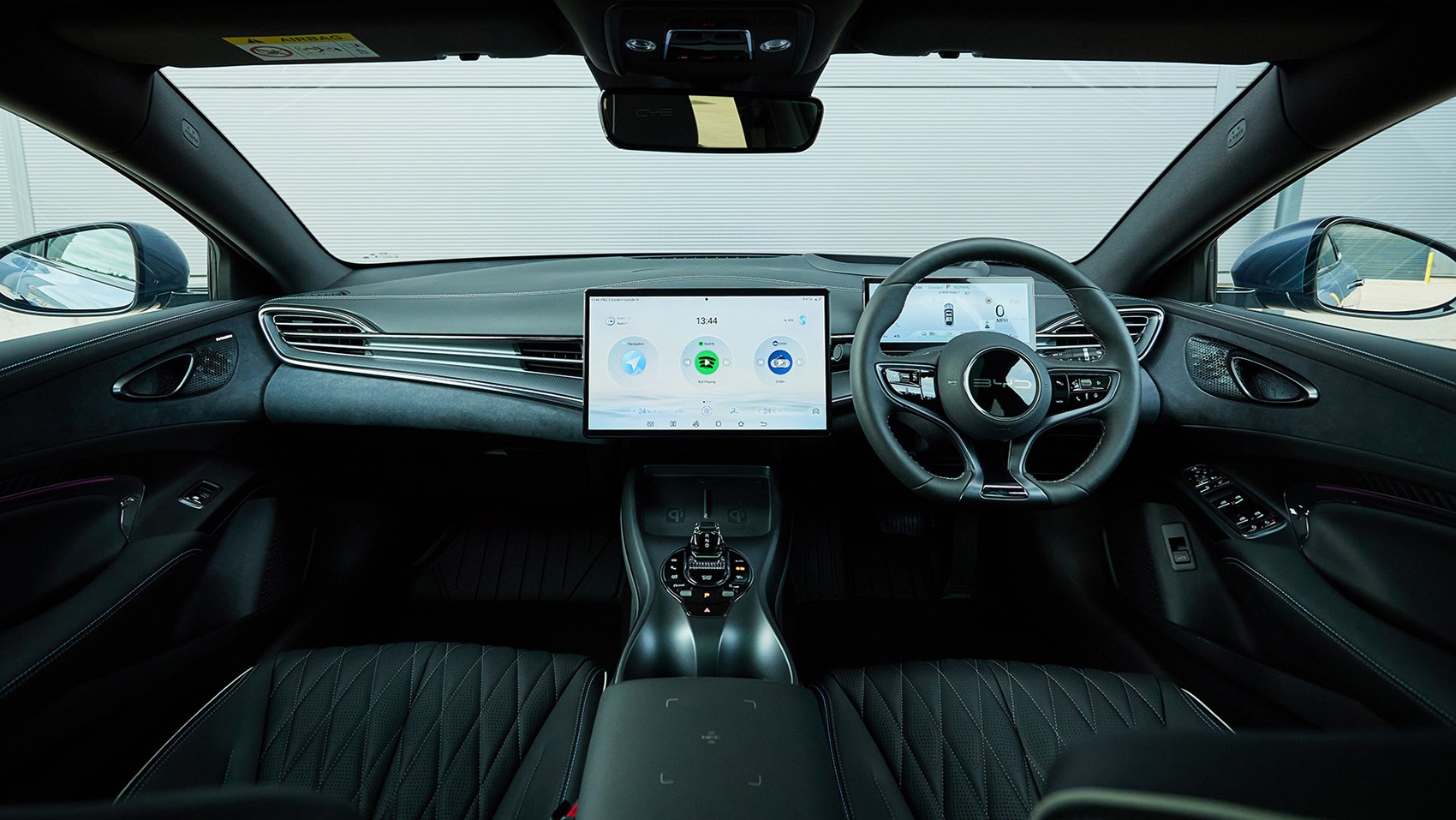
What about the interior?
The Seal’s cabin is dominated by BYD’s 15.6-inch touchscreen infotainment system, complete with pirouetting party piece as it switches from portrait to landscape at the touch of a button. It works less well here than it does in taller vehicles, honestly, but still has its uses for those who appreciate a long forward view on their sat-nav. However, in portrait mode, there’s a bit of a letterbox effect as it gets uncomfortably close to the rear-view mirror.
The system itself is fast and easy to use, and a model of simplicity and restrained design. The rest of the interior is also largely very successful. It feels suitably premium – moreso than the minimalist Model 3, actually – with a more inviting aesthetic and some very nice-looking trim materials. These including a very tactile flavour of suede, which lines the dash and door cards.
But that extends throughout the entire cabin – everything you touch is swathed in either soft-touch plastic, suede or vegan leather, and the switchgear mostly feels good, though the crystalline gear selector is a little gauche, and the door pulls and column stalks feel disappointly plasticky.
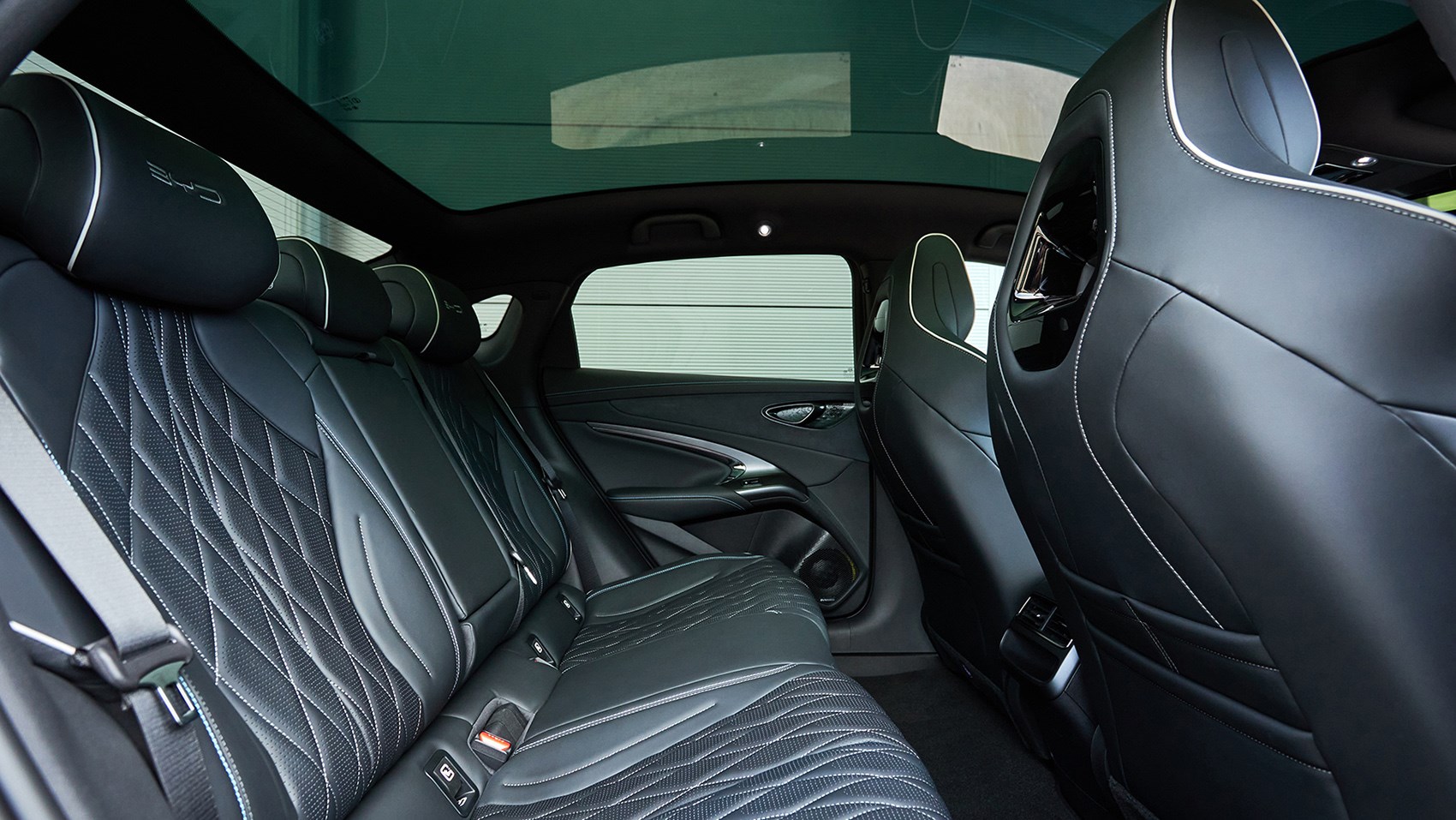
The seats are well shaped, nicely trimmed and they look good. They offer an interesting mix of softness and support, although some might find the boldly ‘BYD’-embossed headrests a little tacky. Practicality is where the Seal scores well, thanks to that compact blade battery taking less space beneath your feet than rivals’ less space-efficient power packs. There’s loads of legroom up front, as well as for rear passengers, where it easily matches the Model 3, and pulls clear of the Polestar 2.
Headroom isn’t quite as generous due to the plunging roofline back there, though, but it could have been worse, with the vast (non-opening) panoramic glass roof clawing back that all-important inch or two. Finally, a nice flat floor means there’s a lot of footroom in the rear, although disappointingly, you can’t tuck your feet very far under the front seats.
Boot space is an okay-ish 402 litres, with a similarly narrow loading aperture to the Model 3. We’d have preferred a hatchback, of course, and wonder why this fastback design couldn’t wasn’t conceived that way. There is a 53-litre lidded ‘frunk’ that should make tidying up charging cables a little easier, though.
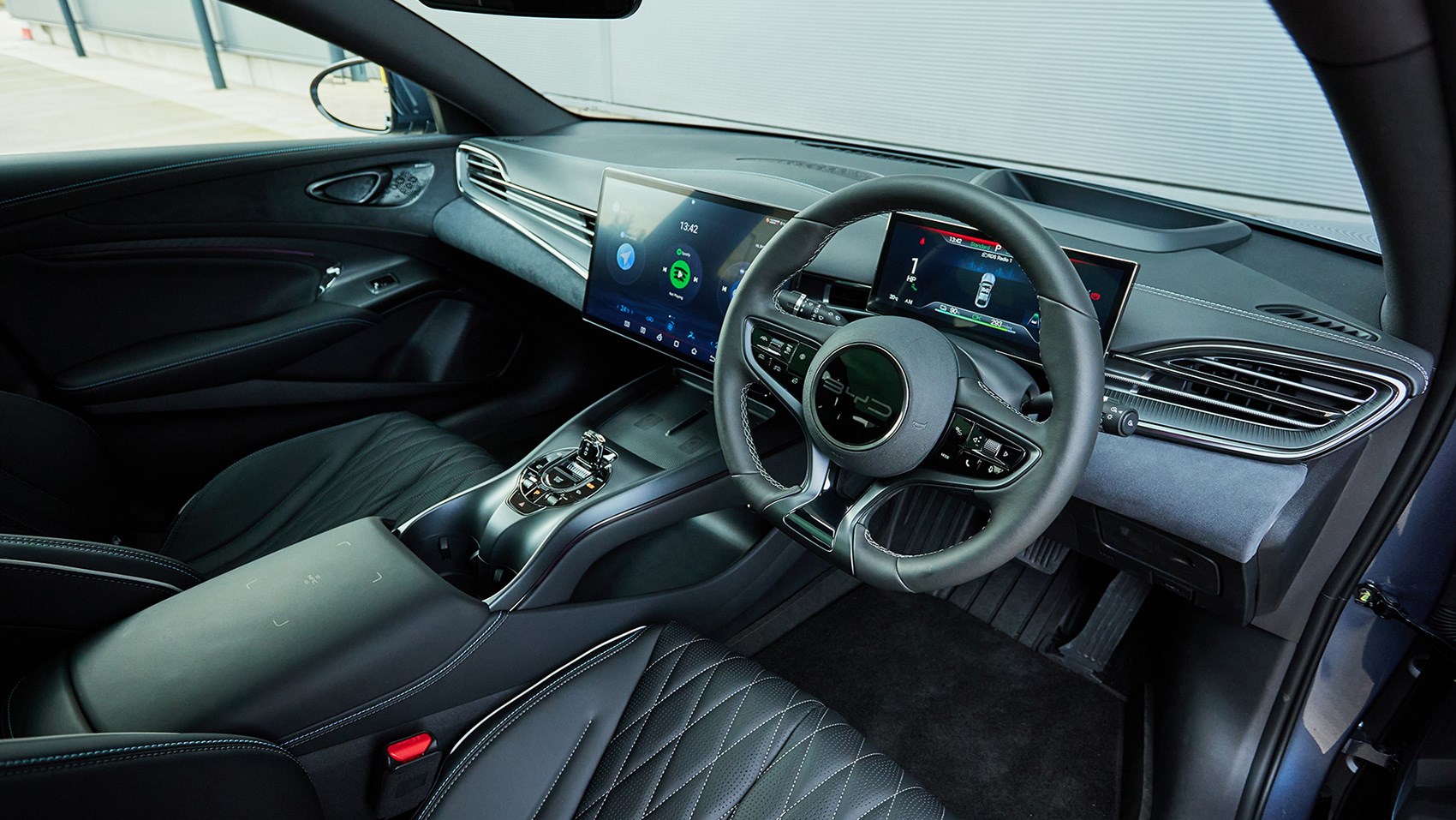
Before you buy
The Seal arrived in the UK in late 2023 and hasn’t changed since launch. Two versions remain available, with a lower-battery variant expected to lower the entry price further at some point in the future. The Seal is priced slightly below the equivalent Tesla Model 3, though there’s no true entry-level model yet.
Its rivals include the Tesla Model 3, BMW i4, Polestar 2 and recently-updated Hyundai Ioniq 6 – all strong contenders. The Seal offers sharper looks than the Hyundai, more space than the Polestar, and a more luxurious feel than the Tesla, making it a convincing alternative for the EV-savvy buyer.
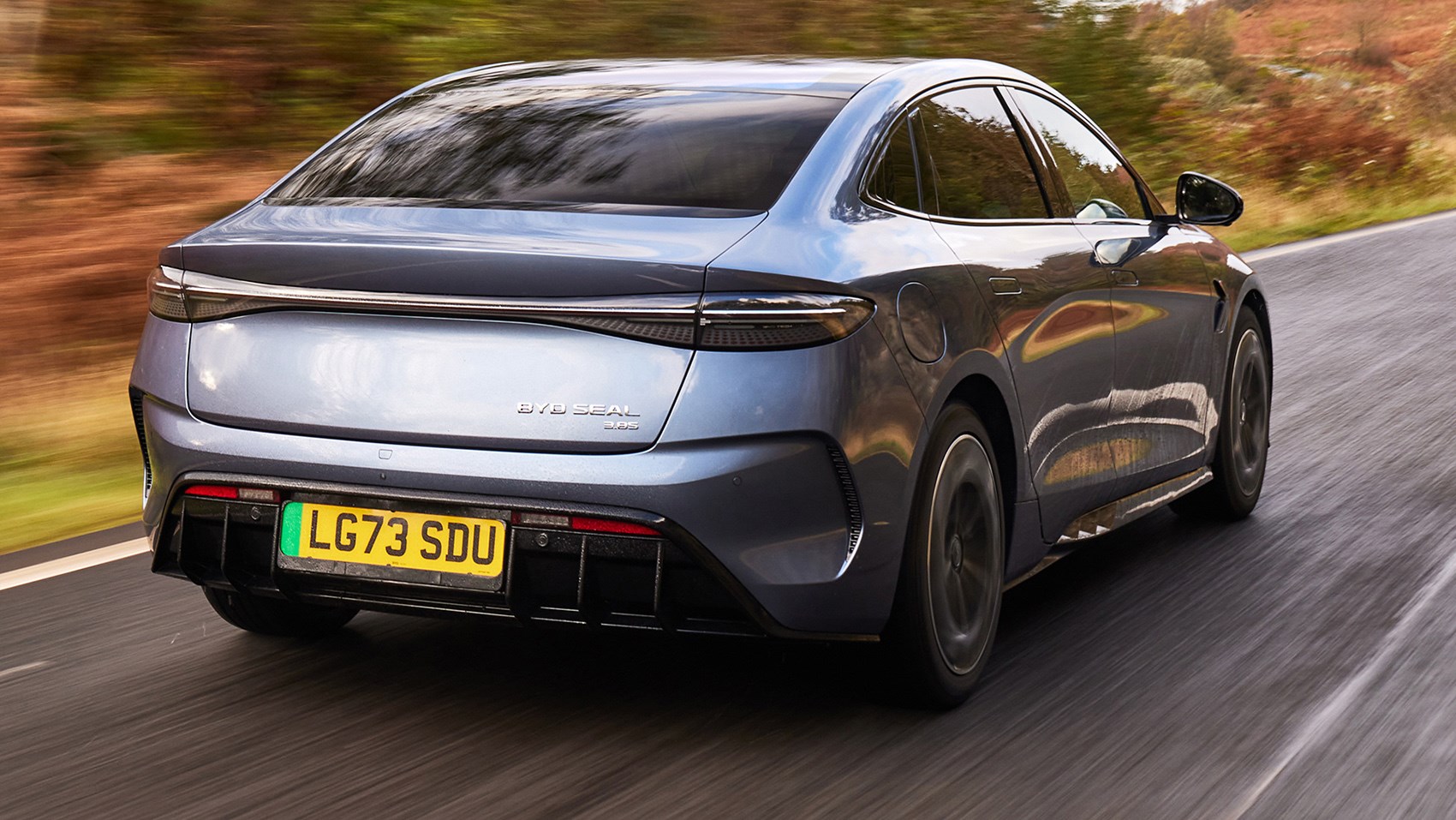
Verdict
The BYD Seal is an impressive achievement, blending efficiency, performance, distinctive styling and tech. It handles neatly, rides firmly but tolerably, and offers a plush, well-finished cabin that feels genuinely premium for the money.
The Design RWD makes plenty of sense, being cheaper, slightly roomier and nearly as quick as the Excellence AWD. Yet given the modest monthly finance gap, the extra punch and kit of the Excellence is hard to resist.
Much now rests on BYD’s growing dealer network and how it looks after early customers as to whether it can maintain its early momentum – the signs are looking good. As it is, the Seal stands as a very tempting alternative in a fast-evolving segment.
Compared with its closest rivals, the Seal looks and still feels competitive, and underlines just how quickly the Chinese industry has stepped up to global EV leadership. Not long ago, recommending a Chinese saloon would have seemed absurd. Now, it makes perfect sense.
Specifications for the Excellence version